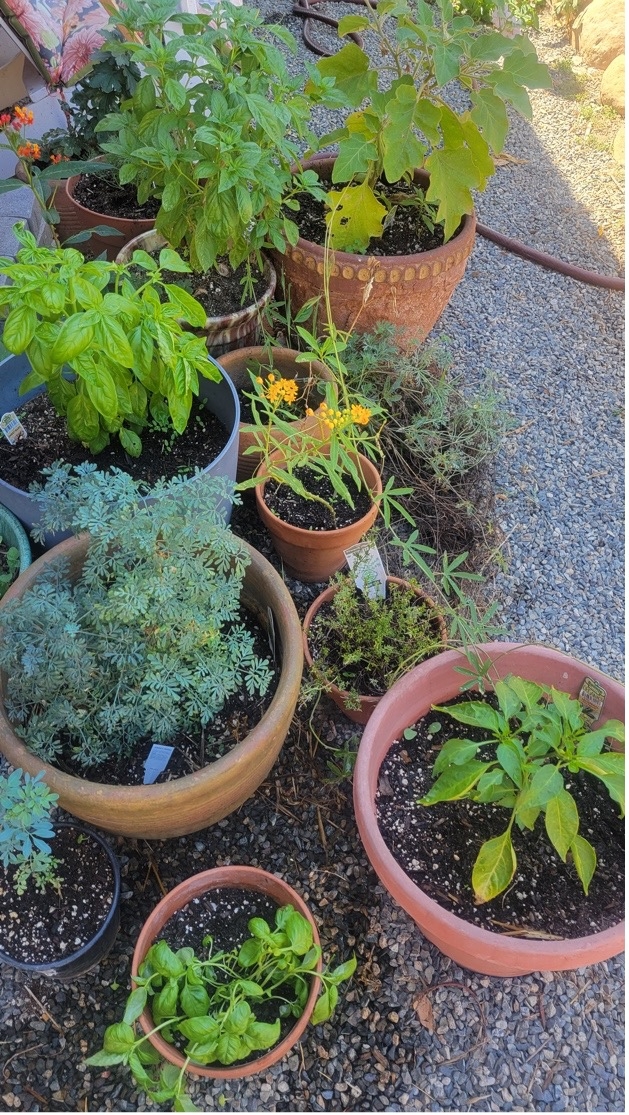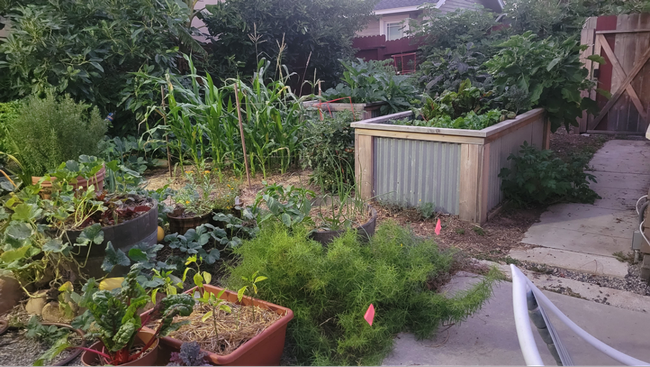A community can bolster its ‘resiliency' by addressing vulnerabilities (e.g., minimizing susceptibility to harm or risk) and building adaptive capacity (e.g., expanding capability in managing, anticipating, or responding to shocks). For example, a community can build resiliency by improving access to fresh, nutrient dense, and culturally relevant food in underserved communities and by expanding urban tree canopy and shade in anticipation of warmer temperatures.
Limited access to land remains a predominant barrier to resiliency in Los Angeles and Orange Counties and to growing foods in cities. As an Urban Community Resiliency Advisor, I am learning from and working with community partners and small business owners to explore innovative uses of space that serve and build community, from hosting free resume writing workshops at a coffee shop to hosting mental health networking events at a plant store.
In addition to commercial spaces, residential spaces can offer often overlooked opportunities to contribute to community resiliency, by providing access to land for growing food in urban areas. Homeowners who make their yards available for micro-community gardens may face fewer barriers to entry; homeowners with a single-family home and yard are more likely to grow produce than renters or homeowners without yard space.

Andrea's Micro-Community Garden
For Andrea, a certified UCANR California Naturalist and Los Angeles County resident, a combination of experiences led her to create a residential garden:
“My education [in ecopsychology] … and the pandemic helped me realize how shaky our food system really is – or could be under certain conditions – and I started to learn about the environmental impacts of agriculture and climate change. Being more capable of growing my own food seemed really important.”
When a back injury inhibited her ability to use her new backyard garden, she decided to recruit neighbors to join her in growing food:
“In my neighborhood a lot of the single-family homes have been taken out for apartment buildings, which means that people don't have access to a yard. I thought maybe some of the people without access to soil that they can really cultivate a relationship with, maybe they would like to grow some food. And so that is when I put the ad out on [social media] looking for people to garden with me. If it were not for that back injury, which thankfully I have recovered from, I may not have thought of this.”
Since opening her yard to her neighbors, 8 people have joined Andrea's micro-community garden. She consistently has two or three people helping at a time.
Opportunities for Continuing Education
Experiential learning is a big part of this project - Andrea and her small group of gardeners are committed to learning through the process of growing food together and continually educating themselves (e.g., taking advantage of municipal workshops or those offered by UCLA Cooperative Extension). Andrea is taking a permaculture certification course to learn more about maximizing yields. The group also draws from their lived experience to problem solve (e.g., strategizing how to protect the avocados from the squirrels).
Fostering Connection
In addition to providing access to fresh fruits and vegetables, starting a micro-community garden can help foster connection among neighbors during a loneliness and isolation epidemic. While doing work in the garden, the members chat about their lives. They share food, recipes, and pictures of meals they have made using their fresh vegetables. Everyone has input in selecting produce to plant, resulting in a garden reflective of the group's preferences and openness to trying new foods.
For those apprehensive with inviting new community members into your space, Andrea suggests joining neighborhood gardening groups to get to know people beforehand or starting very small with one or two neighbors or friends interested in learning how to grow food.
Finding Time
The biggest challenge so far has been finding time. She shared, “I feel like the obstacle I am facing the most is just how chronically and terribly busy people are.”
